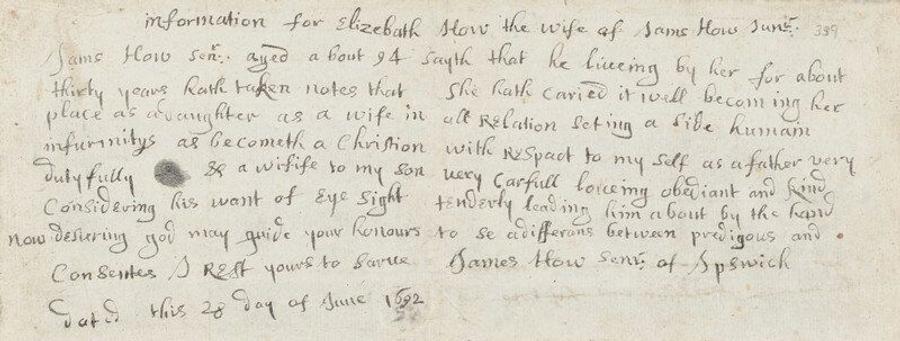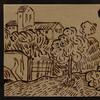Historical Objects Combine With Artists' Contemporary Responses In 'The Salem Witch Trials: Reckoning and Reclaiming' Exhibition
- September 20, 2021 15:28

This fall, the Peabody Essex Museum (PEM) presents a new exhibition about the tragic events and lasting legacy of the 1692 witch trials. The Salem Witch Trials: Reckoning and Reclaiming dives into the circumstances that fueled the crisis while recognizing the individuals who rose to defend those unjustly accused. The exhibition features authentic 17th-century court documents and objects as well as two compelling contemporary responses made by artists with direct ancestral links to the trials. Fashion by Alexander McQueen and photography by Frances F. Denny revive the impact of Salem’s historical trauma and provide a new perspective on a centuries-old story. The Salem Witch Trials: Reckoning and Reclaiming is on view at PEM September 18, 2021 through March 20, 2022.

"More than 300 years after the Salem witch trials, the personal tragedies and grave injustices that occurred still provoke reflection as we continue to reckon with the experiences of those involved,” said Dan Lipcan, the Ann C. Pingree Director of PEM’s Phillips Library and one of the exhibition co-curators. “Thanks to these artists’ mining of Salem’s painful history, we are able to put these events into context with our lives today and imagine how we might courageously mold our communities moving forward while continually advocating for justice and tolerance.”

PEM holds the world’s largest collection of Salem witch trials materials, including more than 500 original documents on deposit from the Massachusetts Supreme Judicial Court. Selections of these documents along with furnishings and personal objects help tell the tragic and true story of those accused, including a trunk that once belonged to Jonathan Corwin, the magistrate who resided at the 17th-century building in Salem that is today known as the Witch House.
The exhibition opens with the power dynamics, fear and community tensions that plagued Salem in the summer of 1692. The extraordinary crisis involved more than 400 people and led to the deaths of 25 innocent people between June 1692 and March 1693. The panic grew from a society threatened by war and a malfunctioning judicial system in a geographical and cultural setting rife with religious conflict and intolerance.
The fashion designer Alexander McQueen’s Fall/Winter 2007 collection, In Memory of Elizabeth How, 1692, was based on his Salem research into his ancestor Elizabeth How, one of the first women to be condemned and hanged as a witch in July 1692. More than three centuries after How’s death, McQueen and Sarah Burton, now the creative director for the House of McQueen, visited Salem. Selections from the resulting intensely personal and autobiographical collection will be on view, including the form-fitting velvet press sample runway dress from PEM’s collection, with a starburst hand-sewn in iridescent gunmetal-gray bugle beads that radiates down the neckline and across the chest and shoulders.
Set in context, nearby authentic documents help tell How’s story, from the initial complaint filed May 28, 1692 to the warrant for her arrest, her examination in court, testimony, indictment, pardon, and final restitution to her family in 1712.
“Alexander McQueen’s theatrical fashion show, featuring his powerful designs, reclaimed How’s power and memory from the false accusation that led to her unjust execution,” said exhibition co-curator, Paula Richter. “His visit to key sites in Salem and research into his ancestestry left a lasting impact on him. The resulting designs include symbols of witchcraft, paganism, magic and religious persecution.”
From a woman in hospital scrubs to a local Salem shop owner, photographer Frances F. Denny’s series Major Arcana: Portraits of Witches in America reclaims the meaning of the word “witch” from its historical use as a tool to silence and control women. As a descendent of both accusers and the accused, Denny set out on a journey to discover modern-day witches. She encountered healers, artists and tarot readers, a vast spectrum of identities and spiritual practices. The exhibition features 13 portraits and accompanying personal essays, each revealing a fascinating glimpse into the contemporary spiritual movement.
“Frances Denny’s portraits not only claim agency for those who identify as witches, but they also diversify our perception of what a witch is,” said Lydia Gordon, PEM’s Associate Curator and exhibition co-curator. “What do witches even look like? These powerful portraits do not festishize, but rather reveal multidimensional, self-possessed individuals. They invite careful study and consideration and remind us that identity is most truthful when it is self defined.”





















